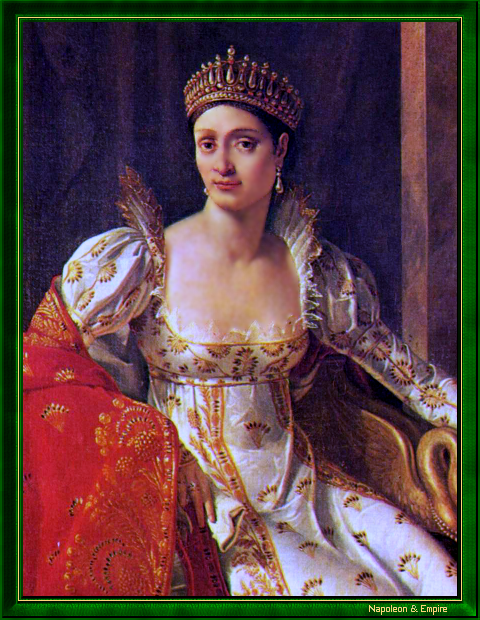Duchess of Lucca and Princess of Piombino, Grand Duchess of Tuscany, Countess of Compignano
Pronunciation:

Elisa, the eldest of Napoleon's three sisters, was born on January 3, 1777 in the Casa Bonaparte on rue Malerba, in Ajaccio .
In 1797, without seeking Napoleon's approval, she married an insignificant Corsican officer, Félix-Pascal Baciocchi. The civil marriage took place on May 1 (or 5, depending on the source) in Marseille, the religious blessing on June 14 in Mombello, near Milan [Milano].
Well-educated, cultured and interested in literature and the arts, Elisa gave François-René de Chateaubriand her patronage at the beginning of the Consulate.
A sign of the esteem in which her brother held her, she was the first, after the proclamation of the Empire, to be granted a state: the Principality of Piombino. Napoleon I, yielding to her insistent entreaties, soon added that of Lucca (Lucca). Elisa moved to the Villa Reale di Marlia , near Lucca.
In 1808, she was granted the Grand Duchy of Tuscany.
Elisa behaved like an authoritarian sovereign, reducing her husband to the role of prince consort and organizing a court where strict etiquette reigned supreme. But she also showed herself to be a shrewd administrator, managing her state correctly and accommodating local sensitivities (she had her ordinances published in French and Italian).
In 1814, the English landing in Livorno forced her to flee. She then lived successively in Bologna [Bologna], Venice [Venezia] and Villa Vicentina, near Trieste, under the name of Duchess of Campignano. It was here, in 1820, that she succumbed to a pernicious fever, aged just forty-three.
She is buried with her husband in the Basilica of San Petronio in Bologna.
"Elisa Bonaparte", by Marie Guilhelmine Benoist (Paris 1768 - Paris 1826).

In 1969, Los Correos de Cuba (Cuban Post Office) issued a 4 Pesos stamp bearing the effigy of Elisa Bonaparte .
Address
7, Rue de de la Chaise. Paris VIIème arrondissement
Hôtel Maurepas: Elisa Baciocchi acquired it in March 1803, and lived there until her departure for Italy in 1805.Other portraits

Enlarge
"Elisa Bonaparte", by Joseph-Boniface Franque (Buis-les-Baronnies 1774 - Naples 1833), ca. 1812.

Enlarge
"Elisa Bonaparte and her daughter Elisa Napoleone", by Pietro Nocchi (Rome 1783 - Lucca 1854).